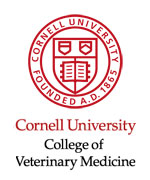"Tuberculosis
– What Makes it an Ideal Disease for the Interface?"
Anita Michel
In recent years it has become evident that the role of wildlife
in the epidemiology of bovine tuberculosis (BTB) has been
greatly underestimated, both in developing countries as well
as in the developed world. With the breakdown of traditional
control programmes and a lack of an effective vaccine, it
is almost impossible for affected countries to eradicate
or even prevent the further spread of this chronic disease.
Compared to developed countries, where economic losses in
the livestock production sector represent the most serious
effect of M. bovis infection at the wildlife-livestock interface,
the range of implications can be much broader in developing
countries.
In South Africa, the two largest game reserves, the Kruger
National Park (KNP) and the Hluhluwe-Umfolozi Park (HUP),
have become endemically infected with bovine tuberculosis
after the disease has spilled over from domestic cattle during
the second half of the 20th century. Although African buffalo
(Syncerus caffer) are the main reservoir in both cases, other
species have recently shown potential to serve as maintenance
hosts. Apart from the impact of this disease on the conservation
of endangered species, on the genetic diversity within infected
species, and on the economic impact with regards to international
trade, tuberculosis caused by M. bovis poses a direct health
threat to communities living along the border of infected
ecosystems. The prevalence of bovine tuberculosis in communal
cattle is currently unknown for most of the areas, but the
risk of M. bovis transmission from wildlife is rapidly increasing
as exceedingly high herd prevalences are reached in buffalo
and as the spectrum of affected wild animal species becomes
broader. Against the generally proclaimed reduced susceptibility
of humans to M. bovis, the human-livestock interface in this
particular case should be considered a favourable environment
for zoonotic tuberculosis because immuno-suppression due
to infection with HIV/AIDS can pave the way for infectious
agents otherwise unable to cause disease on their own.
Along the borders of KNP and HUP, an estimated 165,000 people
are living in close contact with and consume products from
cattle with an unknown BTB status, but which form part of
the wildlife-livestock-human triangle. |
|











